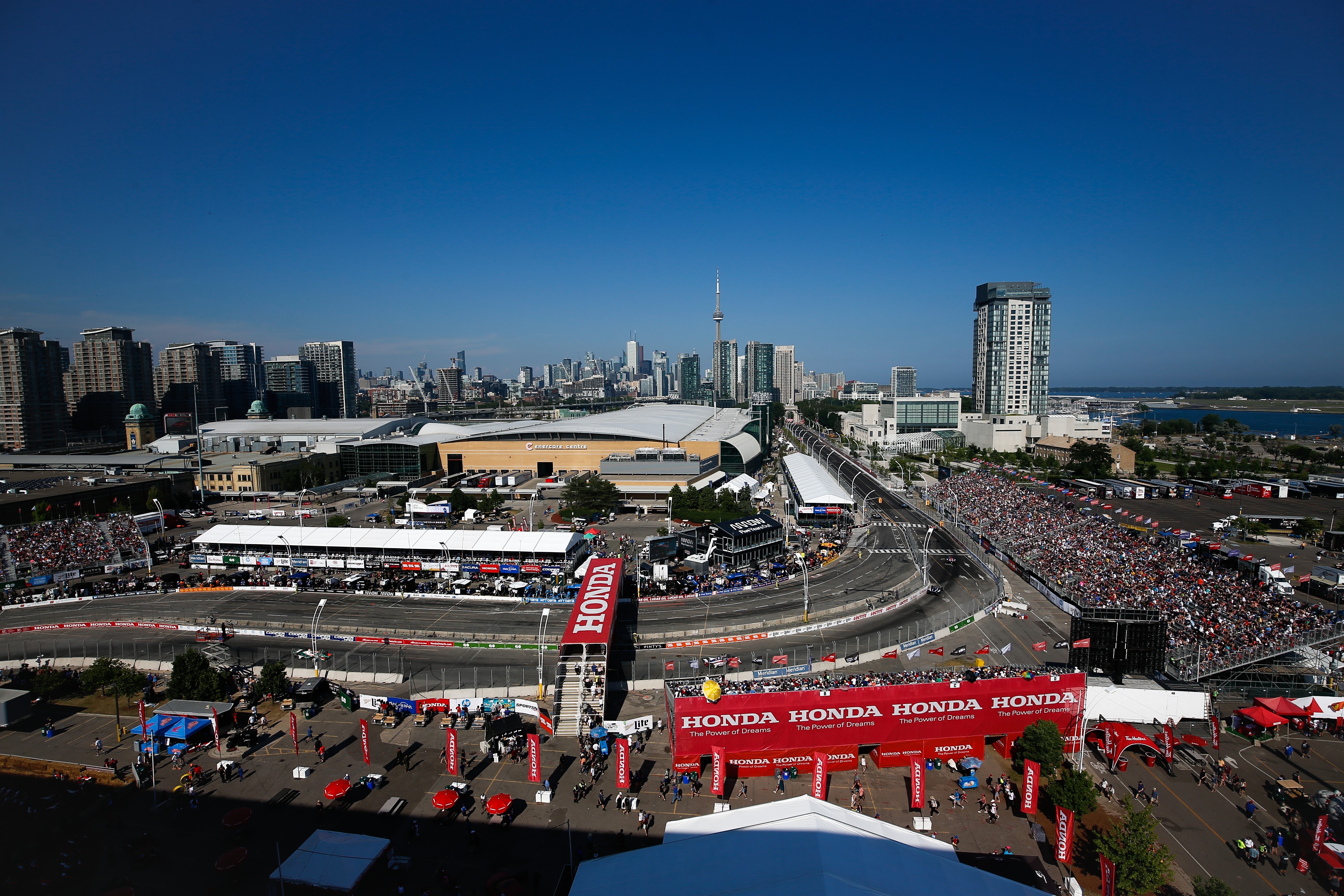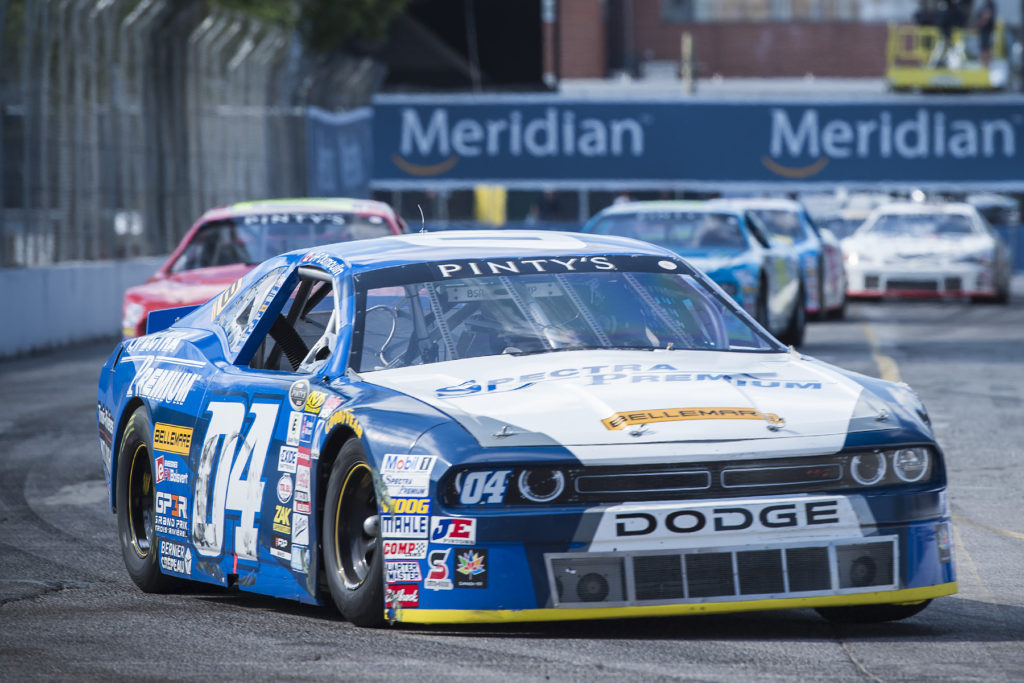
Photo Credit: Joe Skibinski/IndyCar
If you can’t tell by that gorgeous photo above, the Streets of Toronto were packed this past weekend with fans.
So packed, in fact, Honda Indy Toronto president Jeff Atkinson estimated that they expected their three-day crowd to be “well over 125,000.”
And if you think that’s good, the Verizon IndyCar Series race weekend at Long Beach in April exceeded Toronto. Organizers of that event say they had over 185,000 fans at the temporary circuit.
The crowd numbers alone are enough to argue for more street races added in Americanized racing, but couple that with the fact that this weekend’s race in Toronto had spectacular racing from start to finish, I see no reason — except perhaps logistics — that more street courses shouldn’t be added.
It’s damn good racing
It’s easy to assume that because of tighter track limits that the racing would be subpar at best, but that simply isn’t the case. The track being smaller forces drivers to race harder and work for every position they can get. Yes, it’s harder to pass, but it makes drivers take chances they may not take on a permanent circuit with wider corners and straightaways.
And for anyone saying that only open-wheel cars or sports cars would work on a street circuit and not NASCAR, I present you with this.

That’s Jean-Francois (J.F.) Dumoulin leading a pack of NASCAR Pinty’s Series drivers around the Streets of Toronto in his full bodied stock car.
The Pinty’s Series has raced on at least one temporary circuit like Toronto or Trois-Rivieres in Quebec every year since its inception in 2007.
The Pinty’s drivers say they enjoy this type of racing.
“The exit of a corner is not a speed bump with grass. It’s a wall. It’s very rewarding when you get a good lap, but it’s quite challenging,” Alex Tagliani said when asked about racing at Toronto. “Nevertheless, I would never give up a track like [Toronto]. It would be tough to reproduce the atmosphere of the event being downtown, the feeling.”
When asked if he thought it would be possible for the NASCAR XFINITY Series or Monster Energy NASCAR Cup Series to run on street courses, Tagliani said it would, but he admitted it might be tough for the drivers.
“It would work [but] there would be a lot of body panels everywhere,” he laughed.
“When you run 30 cars, and there would probably be 30 cars here, it would go crazy. It would be tough to have 10 laps in a row without a caution … I’m sure it’d be a hell of a show for the fans.”
Logistics
So if the racing is good, the drivers enjoy it and the fans show up in droves, it brings us to back to the reason stated near the beginning on why adding street courses can be so hard; logistics.
It’s hard to convince a province, state or country to allow money in a sport or recreation budget to go towards racing on city or province/state-mandated streets. It’s even harder to convince a board made up of city councilors and mayors to do that, especially when it’s going to mean shoveling out a lot of money and closing city streets for days at a time.
Cities need to know that their event would be financially feasible. They need to know that they’ll make money, or at least break even, rather than lose it.
Location, location, location…
The key to adding more street races would be to do it in a market where there’s fans or even celebrity fan fare (i.e. Long Beach).
Running a street race in a place like Charlotte where a ton of NASCAR fans are located or a tourist destination like Las Vegas could bring in a lot of fans and potentially a lot of money for a local economy.
Of course, there a lot of challenges to putting on a three-day event where a series is racing entirely in a city, but if you pick the right destination and the right race promoters, you might just find yourself making a boatload of cash.
**The opinions expressed on this site are not necessarily those of the publisher, management or staff. All comments other than website related problems need to be directed to the author. (c)OnPitRoad.com. **




